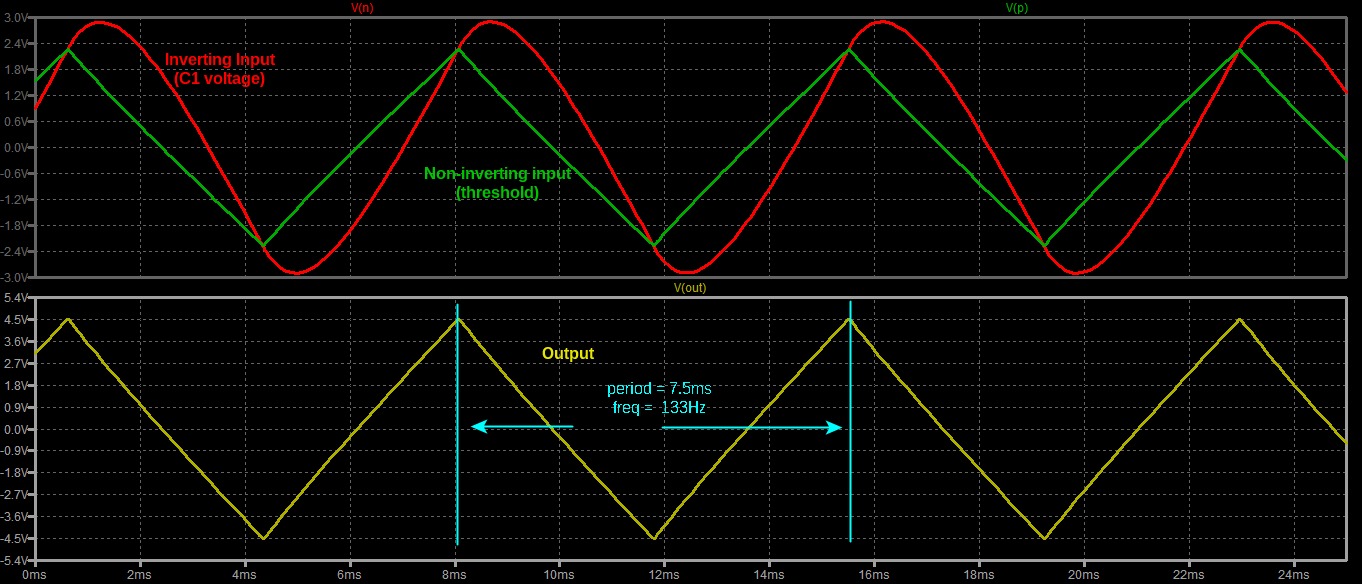Without knowing the part number of the opamp you are using it's impossible to give a detailed explanation of what you are seeing.
If we assume you're using some jellybean opamp, like the TL081 or the LM358 (or similar) the problem can be explained considering their open-loop output resistance \$R_0\$, which is around some hundreds ohm. The following explanation is made under that assumption. This doesn't mean there aren't additional factors at play, depending on the specific opamp.
If we assume an LM358 opamp, then \$R_O = 300 \Omega ~@~ 1MHz\$ at no load, according to the datasheet of TI (see page 7).

You are operating near DC (0Hz), so the output resistance could be well a bit higher, due to the absence of capacitive effects at the opamp output stage.
From your scope screenshot your signal has a frequency \$f_{out}\approx130Hz\$ hence a period \$T_{out}=1/F_{out}\approx7.7ms\$. Therefore the output ramp duration is half that, i.e. \$T_{ramp}\approx3.8ms\$. Keep all this in mind.
Now, when the output tries to charge the load capacitor \$C_{load}=10\mu F\$
through its internal resistance it does that with a time constant
\$\tau = R_{out}\cdot C_{load} = 300 \Omega \cdot 10\mu F \approx 3ms\$.
This means that the output ramp is just \$ 1.3 \cdot \tau \$, so what you are seeing is just the initial part of the exponential charge cycle of the load capacitor. This is also justified by your snapshot, where you can see that the rising ramp is not perfectly linear, but it slightly bulges upwards, whereas the falling ramp bulges downwards.
To verify this, try and reduce the load cap by a factor of two, and you should see a bigger fraction of the charge/discharge cycle, which will resemble a "shark fin". If you reduce the load cap by a factor of 10, you should see a more or less square wave with smoothed edges.
The explanation above doesn't take into consideration other non-linear effects that could kick in when the output current is near or above the rated maximum (the output stage usually has some current-limiting circuitry). These effects will have the net result that the "equivalent" output resistance seen by the load cap will be much higher (the output will behave more or less like a current source/sink) and this will linearize the output ramp even more (a cap charged at constant current will produce a linearly increasing voltage at its terminals).
EDIT (after OP provided opamp part number)
Now, consider the datasheet of the opamp (TI). At page 10 you find the internal schematic, reproduced below with emphasis by me:

Those two BJTs with those two resistances are the output current limiting circuit. To protect the output transistors, that circuit activates when the load draws too much current and limits dissipation in the output stage.
When the opamp output is in current limiting regime it acts as a (non-ideal) current source/sink, so that's what you are seeing in the scope image.
The frequency is no longer set by C1-R1 alone, since the output doesn't change abruptly from positive to negative saturation, and therefore the switching threshold set by R2-R3 changes (linearly) with time since it is half the output voltage.
I simulated your circuit with LTspice, using the UA741 SPICE model provided by TI. Here's the schematic:

and here are the plots of the output and the input signals:

As you can see the simulation matches your measured circuit behavior quite well.






